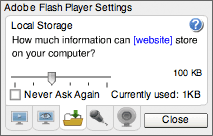Adobe Flash Player Shockwave For Mac
By now, you’ve probably heard that the future of Adobe Flash isn’t bright. Plagued by security issues, Adobe Flash has always been a thorn in the flesh of software developers such as Apple and Microsoft, who finally said that enough is enough and decided to get rid of it. In this article, we explain why Adobe Flash matters and why you, as a Mac user, should care about its inevitable demise. The Origin of Adobe Flash Adobe Flash started its arduous life in the 90s, when its precursor, named SmartSketch, was published by FutureWave Software. The rising popularity of the internet at the time made FutureWave Software realize that their vector drawing application had had the potential to challenge Macromedia Shockwave, a multimedia platform for building interactive multimedia applications and video games.
In 1995, FutureWave Software approached Adobe Systems and offered SmartSketch for sale. Adobe Systems, however, declined the offer, which led to FutureWave Software getting acquired by Macromedia and its subsequent rebranding to Macromedia Flash 1.0. 2017 winamp for mac download.
Under Macromedia’s patronage, Flash quickly gained both market share and new features, including scripting and data access capabilities. In 2005, Macromedia was acquired by Adobe Systems for approximately $3.4 billion. Adobe Systems added support for the ActionScript 3.0 programming language, improved the animation capabilities of Flash, included a 3D engine that allowed basic object transformations in 3D space, and allowed GPU-accelerated 3D rendering for Flash applications and games on desktop platforms, just to name a few noteworthy improvements.
The End of Adobe Flash By the beginning of this decade, Adobe Flash, including Flash for Mac, has already established itself as a popular multimedia platform for building interactive multimedia applications and video games. In 2011, Flash was included in 99 percent of desktop browsers. Unfortunately for Flash, the platform had already entered the last stage of its life by that time. In an open letter titled, Steve Jobs explained why he decided not to include support for Flash in iOS, “Adobe’s Flash products are 100% proprietary. They are only available from Adobe, and Adobe has sole authority as to their future enhancement, pricing, etc.

Adobe Flash Player for Mac OS X 10.7.Download and install process of Adobe Flash Player for Mac OS X 10.7 is easy.So download and install. Adobe – Install Adobe Flash Player Download Adobe Flash Player, the cross-platform browser plug-in that delivers breakthrough Web experiences to over 99% of Internet users. By clicking the Download now button, you acknowledge that you have read and agree to the Adobe Software Licensing Agreement. Adobe Flash player may still be called Shockwave Flash in some places still. The Shockwave (for director) Player is a different Plugin and is not needed for Flash to work. The Shockwave player plugin is used little now days compared to the Flash player. Shockwave player free download - Adobe Shockwave Player, Adobe Shockwave Player, Adobe Flash Player, and many more programs. How to Enable Adobe Flash Player on Mac The most straightforward way how to re-enable Adobe Flash Player on Mac computers is to simply uninstall it. Doing so will also ensure that you’re using the latest version and enable Adobe Flash Player on Mac across all installed web browsers and applications that use it.
While Adobe’s Flash products are widely available, this does not mean they are open, since they are controlled entirely by Adobe and available only from Adobe. By almost any definition, Flash is a closed system.” Most Apple shareholders would most likely consider this to be a good-enough reason to adopt HTML5, CSS, JavaScript, and other open standards instead, but Jobs had more reasons to stay away from Flash. Microsoft office 2011 for mac uninstall outlook. “Symantec recently highlighted Flash for having one of the worst security records in 2009. We also know firsthand that Flash is the number one reason Macs crash. We have been working with Adobe to fix these problems, but they have persisted for several years now. We don’t want to reduce the reliability and security of our iPhones, iPods and iPads by adding Flash,” he said. Apple wasn’t the only company that was sick and tired of the security plaguing Flash.
As such, nobody was surprised when Adobe released a, officially stating that the company was planning to stop updating and distributing the Flash Player at the end of 2020. “Adobe will continue to support Flash on a number of major OSs and browsers that currently support Flash content through the planned EOL. This will include issuing regular security patches, maintaining OS and browser compatibility and adding features and capabilities as needed.” While most major websites have already moved away from Flash and, just like Apple, embraced HTML5, CSS, and JavaScript, some still depend on the deprecated technology, forcing many Mac users to keep Adobe Flash for Mac installed on their computers. If you count yourself among them, the first thing you should do is ensure that you’re using the latest version of Flash.